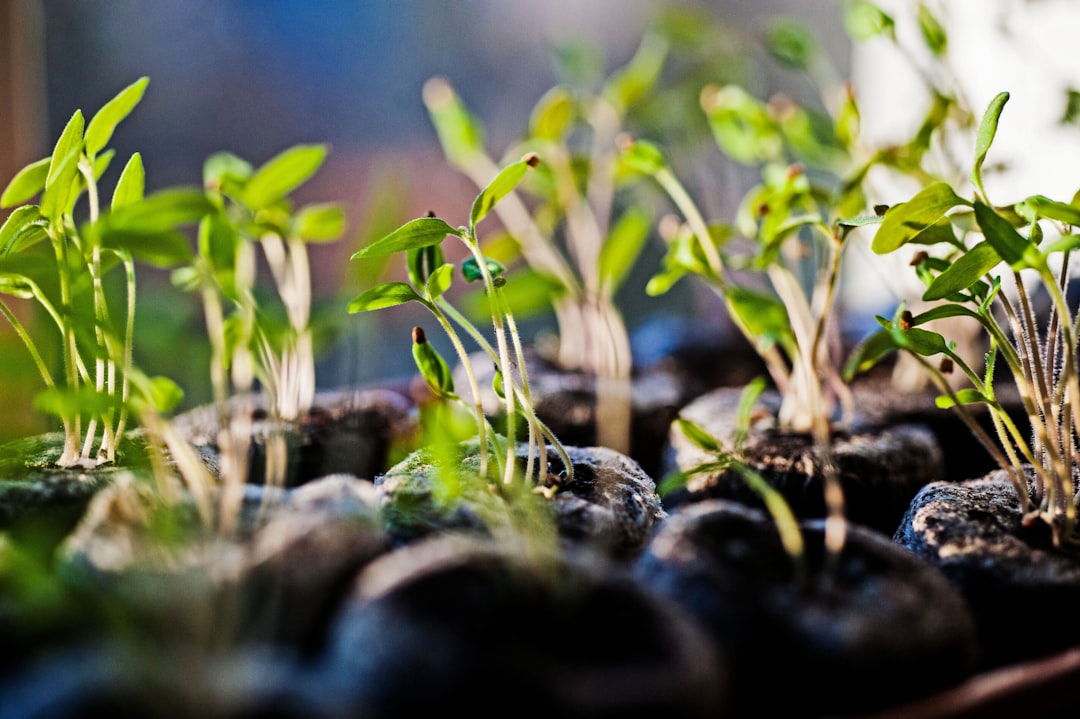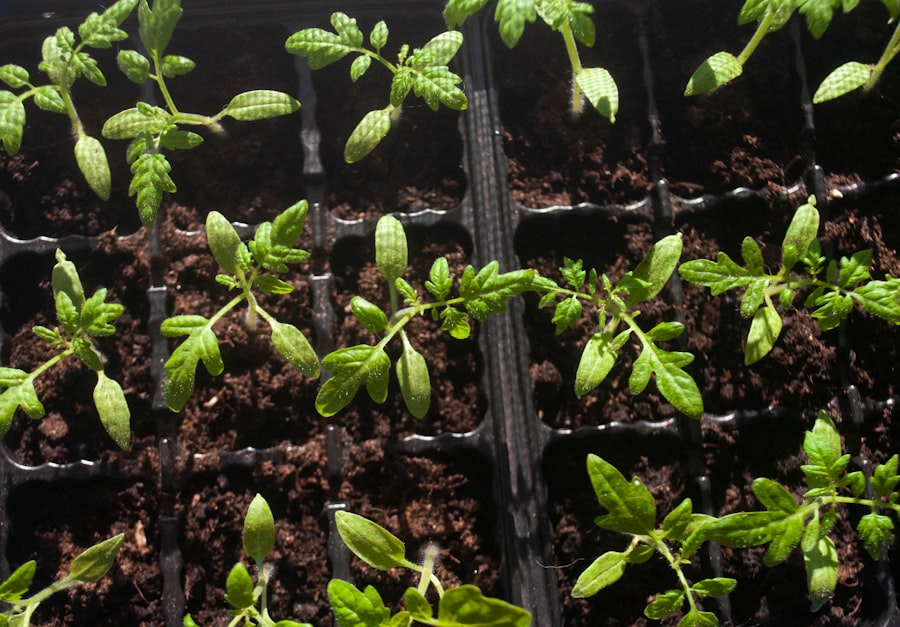Growing Tomato Seedlings: Tips for Success

Tomato seedlings are a crucial part of any successful gardening endeavor. Starting with healthy seedlings ensures that your tomato plants have a strong foundation for growth and productivity. In this article, we will explore everything you need to know about tomato seedlings, from choosing the right seeds to transplanting them into your garden. By following these tips and guidelines, you can enjoy a bountiful harvest of delicious tomatoes.
Understanding Tomato Seedlings: What You Need to Know
Tomato seedlings are young tomato plants that have been grown from seeds. They are typically started indoors, in a controlled environment, before being transplanted into the garden. Starting with healthy seedlings is essential because they have a higher chance of survival and are less susceptible to diseases and pests.
There are several common types of tomato seedlings, including determinate, indeterminate, and heirloom varieties. Determinate tomatoes are compact plants that grow to a predetermined height and produce fruit all at once. Indeterminate tomatoes are vining plants that continue to grow and produce fruit throughout the season. Heirloom tomatoes are open-pollinated varieties that have been passed down through generations and are known for their unique flavors and characteristics.
Choosing the Right Tomato Seeds for Your Garden
When choosing tomato seeds for your garden, there are several factors to consider. First, think about the climate and growing conditions in your area. Some tomato varieties thrive in hot climates, while others prefer cooler temperatures. Additionally, consider the size and flavor of the tomatoes you prefer. Some popular tomato varieties include Beefsteak, Roma, Cherry, and Grape tomatoes.
You can purchase tomato seeds from various sources, including local nurseries, garden centers, and online retailers. It’s important to choose reputable suppliers that offer high-quality seeds. Look for seeds that have been tested for germination rates and are free from diseases or pests.
Starting Your Tomato Seedlings: Step-by-Step Guide
| Step | Description |
|---|---|
| 1 | Choose a sunny location for your seedlings |
| 2 | Fill seedling trays with potting soil |
| 3 | Plant tomato seeds in trays |
| 4 | Water the soil gently |
| 5 | Cover the trays with plastic wrap |
| 6 | Place the trays in a warm location |
| 7 | Remove the plastic wrap once the seeds have sprouted |
| 8 | Transplant the seedlings into larger containers |
| 9 | Harden off the seedlings before planting them outside |
To start your tomato seedlings, you will need a few materials, including seed trays or pots, seed starting mix, and a heat mat or grow lights. Fill the trays or pots with the seed starting mix, which should be lightweight and well-draining. Moisten the mix before planting the seeds to ensure proper germination.
Plant the tomato seeds according to the instructions on the seed packet. Typically, you will need to plant them about ¼ inch deep and space them a few inches apart. Cover the seeds with a thin layer of soil and gently press down to ensure good contact.
Place the trays or pots in a warm location, ideally between 70-80 degrees Fahrenheit. You can use a heat mat or grow lights to provide consistent warmth and light. Keep the soil moist but not soggy, as excessive moisture can lead to damping off disease.
Providing Optimal Growing Conditions for Tomato Seedlings
Tomato seedlings require specific temperature and lighting conditions to thrive. They prefer temperatures between 70-80 degrees Fahrenheit during the day and slightly cooler temperatures at night. If you are starting your seedlings indoors, you can use a heat mat or adjust the thermostat to maintain these temperatures.
In terms of lighting, tomato seedlings need at least 12-16 hours of bright light each day. If you don’t have access to natural sunlight, you can use fluorescent or LED grow lights. Position the lights about 2-4 inches above the seedlings and adjust the height as they grow.
Proper ventilation is also crucial for tomato seedlings. Good air circulation helps prevent diseases and strengthens the plants’ stems. You can use a small fan or open a window to provide fresh air and reduce humidity levels.
Watering Tomato Seedlings: Dos and Don’ts

Proper watering is essential for the health of tomato seedlings. They require consistent moisture, but overwatering or underwatering can lead to problems. Water the seedlings when the top inch of soil feels dry to the touch. Use a watering can or spray bottle to avoid disturbing the delicate seedlings.
Avoid overwatering, as it can lead to root rot and other diseases. On the other hand, underwatering can cause the seedlings to wilt and stunt their growth. It’s important to find a balance and adjust your watering schedule based on the specific needs of your seedlings.
Fertilizing Tomato Seedlings: Tips for Healthy Growth
Fertilizing tomato seedlings is crucial for their healthy growth and development. Start by using a balanced fertilizer, such as a 10-10-10 or 14-14-14 formula. These numbers represent the ratio of nitrogen, phosphorus, and potassium, which are essential nutrients for plant growth.
Apply the fertilizer according to the instructions on the package. Typically, you will need to mix it with water and apply it to the soil around the seedlings. Be careful not to over-fertilize, as it can burn the plants’ roots and cause damage. It’s best to start with a diluted solution and gradually increase the strength as the seedlings grow.
Transplanting Tomato Seedlings: Best Practices
Transplanting tomato seedlings into your garden is an important step in their growth process. It’s crucial to wait until all danger of frost has passed and the soil has warmed up before transplanting. This is usually around 2-3 weeks after the last frost date in your area.
Before transplanting, prepare the soil by adding compost or organic matter to improve its fertility and drainage. Dig a hole that is slightly larger than the root ball of the seedling. Gently remove the seedling from its container and place it in the hole, making sure that the top of the root ball is level with the soil surface.
After transplanting, water the seedlings thoroughly to help them establish their roots. Mulching around the plants can help conserve moisture and suppress weeds. It’s also a good idea to provide support, such as stakes or cages, for indeterminate varieties that will grow tall and vine-like.
Preventing Common Tomato Seedling Problems
Tomato seedlings are susceptible to various problems, including damping off, fungal diseases, and pests. Damping off is a common problem that occurs when the seedlings are overwatered or exposed to excessive moisture. To prevent damping off, make sure the seedlings have proper air circulation and avoid overwatering.
Fungal diseases, such as early blight and powdery mildew, can also affect tomato seedlings. To prevent these diseases, avoid overhead watering and provide good air circulation. If you notice any signs of disease, such as yellowing leaves or spots, remove the affected plants to prevent further spread.
Pests, such as aphids and tomato hornworms, can also damage tomato seedlings. Regularly inspect your plants for any signs of pests and take appropriate measures to control them. This can include handpicking the pests, using organic insecticides, or introducing beneficial insects that prey on pests.
Hardening Off Tomato Seedlings: Preparing for Outdoor Planting
Hardening off is the process of gradually acclimating tomato seedlings to outdoor conditions before planting them in the garden. This step is important because sudden exposure to harsh sunlight and temperature changes can shock the seedlings and stunt their growth.
To harden off your tomato seedlings, start by placing them outdoors in a sheltered location for a few hours each day. Gradually increase the amount of time they spend outside over the course of 1-2 weeks. During this time, protect the seedlings from strong winds and direct sunlight.
Planting Tomato Seedlings: Tips for Success in the Garden
When planting tomato seedlings in your garden, choose a sunny location with well-draining soil. Tomatoes thrive in full sun, which means they need at least 6-8 hours of direct sunlight each day. The soil should be rich in organic matter and have a pH level between 6.0-7.0.
Dig a hole that is slightly larger than the root ball of the seedling. Gently remove the seedling from its container and place it in the hole, making sure that the top of the root ball is level with the soil surface. Backfill the hole with soil and gently firm it around the plant.
After planting, water the seedlings thoroughly to help them establish their roots. Mulching around the plants can help conserve moisture and suppress weeds. It’s also important to provide support, such as stakes or cages, for indeterminate varieties that will grow tall and vine-like.
Tomato seedlings are an essential part of any successful gardening endeavor. By starting with healthy seedlings and providing optimal growing conditions, you can enjoy a bountiful harvest of delicious tomatoes. From choosing the right seeds to transplanting them into your garden, this article has provided a comprehensive guide to growing tomato seedlings. So why not give it a try and experience the joy of growing your own tomatoes? Happy gardening!



